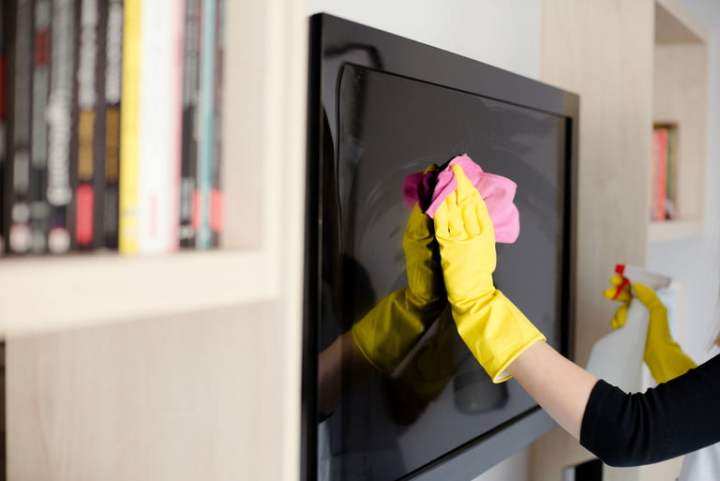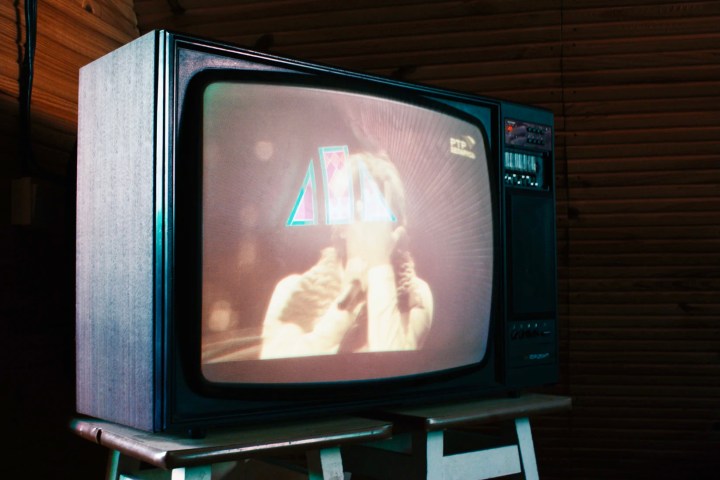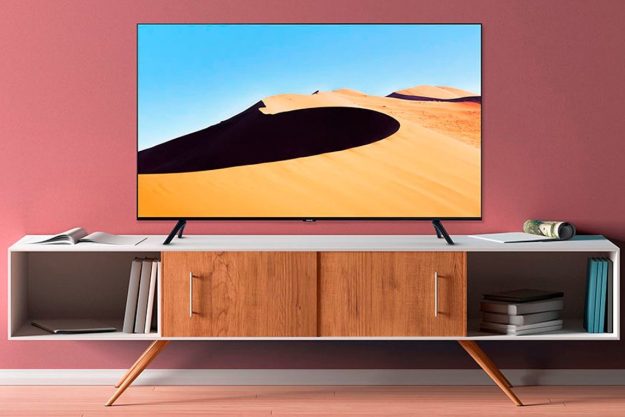Fingerprints, sneeze debris, and other gross human and animal fluids are never fun to look at, especially when they're plastered on to your TV screen. Allowing gunk to buildup over time could shorten the lifespan of your QLED or OLED, which means it’s about time we taught you how to clean your precious panel.
Fortunately, the process isn’t too difficult, and you can get all the cleaning supplies you need for less than $30 in most cases. So are you ready to make your TV shine like it did the day you un-boxed it? Let’s get cleaning!
Cleaning the display
Follow these steps to perform a safe and effective general cleaning of the display:
Step 1: The first thing you’ll want to do is turn off your television and make sure it has a chance to cool down.
Step 2: Wait until it’s no longer warm before proceeding with the following steps. Failure to do so could cause some damage.
Step 3: When it’s cool to the touch, dust the screen to remove any dirt particles, then wipe it over with your soft, lint-free cloth to remove any residual dust.
Step 4: If you can’t see any visible smudges after you’re done dusting, stop here.
Sometimes you may need a deeper clean
If your screen is still covered in muck, it’s time to mix up a batch of cleaning solution.
Step 1: Mix the isopropyl alcohol with water in a measuring cup, ensuring the solution is equal parts water and alcohol. If you don’t have a measuring cup, try using a shot glass to measure quantities before mixing. In any case, just make sure you’re not overdoing it with the alcohol — the resulting solution shouldn’t be more than half alcohol or it could tarnish the display.
Step 2: Dip your cloth into your freshly mixed solution and wring it out to remove excess moisture. You want the cleaning cloth to be damp, not wet.
Step 3: Gently wipe the damp cloth across your display.
Step 4: Use the second lint-free cloth to dry your display. Don’t leave any moisture on it — you’ll want it to be completely dry before turning the TV back on.

Cleaning an older tube TV screen
We can’t just ignore the OG hardware. If you’ve still got an older tube-style TV hanging around the house and it simply refuses to die, here’s a quick how-to for getting the smudges and dust off of your old giant. Luckily, you’ll be able to use some household cleaners you probably have hanging around.
Step 1: Unplug your TV. If it was on for a while before you unplugged, give it time to cool down.
Step 2: Once the TV has settled down to room temperature, grab the microfiber cloth and wipe away any dust on the tube TV’s screen. Once the dust has cleared, you may still have fingerprints and other gunk to contend with.
Step 3: To clear the rest of the mess, you can use the same solution you put together to clean your high-end TV. If you’re lacking the materials to create this concoction, you can use a regular glass cleaner instead. This is because most older tube TVs actually have glass screens.
Important note: Do not under any circumstances use regular glass cleaner to clean an HDTV. The harsh chemicals used in the cleaner will damage the TV screen.

Additional tips
- If your TV’s bezel makes it difficult to clean the corners and near the edges of the display, use a cotton swab dampened with your solution to get to the hard-to-reach areas.
- Make sure you’re using the right chemical. Don’t use ethyl alcohol, acetone, toluene, ethyl acid, ammonia, or methyl chloride — only isopropyl alcohol.
- Always use a clean cloth, as hard particles can get trapped in cloth fibers and leave unwanted scratches.
- Ensure your cleaning cloth is damp, not wet. You don’t want drops running down your display with each wipe.
- Do not use Windex or other glass cleaners! Such solutions generally contain ammonia and will hurt your TV screen.
- Do not use paper towels; they leave behind tiny bits of paper that can mess up your display.
Now that your TV is like new, why not give your earbuds a cleaning?
Editors' Recommendations
- Best Samsung TV deals: Save on 4K TVs, QLED TVs, OLED TVs, 8K TVs
- Best 70-inch TV deals: Get a big screen for sports for $420
- Best Vizio TV deals: Cheap smart TVs starting at $90
- Best projector deals: Replace your TV with a big screen from $58
- Best 85-inch TV deals: Save on Samsung, Sony, TCL, and more




